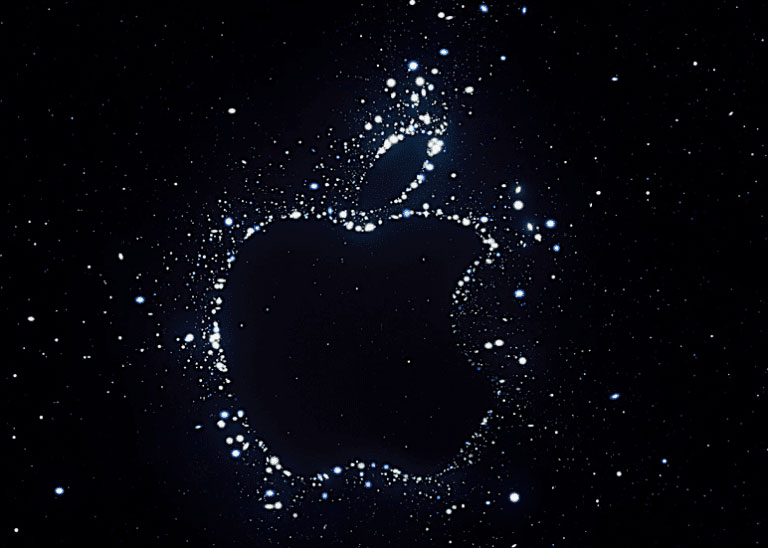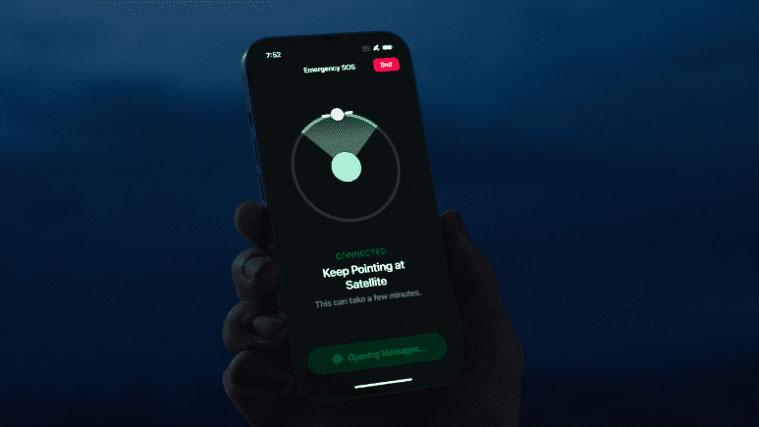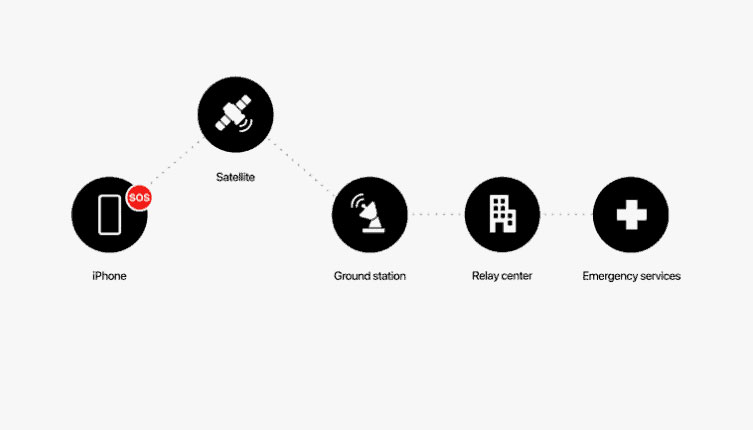 Jay Monroe. Credit: Globalstar
Jay Monroe. Credit: Globalstar
PARIS — Globalstar Executive Chairman Jay Monroe, whose family’s investment has kept the mobile satellite service in business since 2004, outlined the advantages of the big-splash Apple commitment that Globalstar says is “transformational.”
The long-suspected but not formally confirmed Globalstar-Apple deal, disclosed Sept. 7 at Apple’s annual new-product event, surrenders much Globalstar control to Apple in return for a long-term supply of cash.
Among other things, the agreement commits Apple to paying 95% of the capex associated with a Globalstar contract with MDA Corp. of Canada and Rocket Lab to build 17 new Globalstar satellites, with an option for nine more.
The $327-million contract will require Globalstar to take out a loan, to be organized by Goldman Sachs, which is expected to be secured before the end of the year.
Apple will pay the interest costs of the loan in addition to 95% of its principal.
In return for the revenue Apple will be paying for the Globalstar service — an emergency-message feature on iPhone 14 models to be sold starting in November — Globalstar is scrapping its second-generation Duplex two-way service. Globalstar values its past investment in this service at $175 million.
On the revenue Side, Globalstar expects the arrival of Apple to boost its revenue to $215 million in 2023, depending on how many Apple-related milestones it has achieved, and to generate a 55% EBITDA margin.
By 2026, when the MDA/Rocket Lab satellites will be in service, revenue should increase 35%, to $247.5 million, Globalstar said in a Sept. 7 filing with the U.S. Securities and Exchange Commission (SEC).
Globalstar revenue for the first six months of 2022 was $38.6 million.
 Credit: Apple video
Credit: Apple video
Apple has the right to purchase up to 2.64% of Globalstar’s equity when the Apple service starts, at an average price of $1.01 per share. Globalstar’s shares have been on a roller-coaster ride as the rumors and then the fact of the Apple deal is assessed by investors.
In a Sept. 9 interview, Monroe explained some of the merits of the Apple agreement, which he said the market has not fully understood. His main point: Apple’s product and service offer of a satellite-delivered emergency messaging service to standard smartphones starts this year. The multiple other players looking to provide the same service are still years away.
For all its many advantages for Globalstar, the company is surrendering a lot of control to Apple.
It depends how you look at the puts and takes. They are taking 95% of the liability associated with ever having to build another satellite. We get paid a lot of money to operate the network and, if we expand the network, they pay for that — whether it’s satellites or other costs.
On a macro level, they are going to be in so many devices, something like 200 million devices a year. There is no way for us to begin to have Wall Street understand what that means to us. They will understand eventually.
A lot of the benefit to us depended on developing the ecosystem and we have done that in the past year or so with various announcements, culminating with the most recent agreement with Apple.
 Credit: Apple video
Credit: Apple video
When you distill it all down, we have a ton of EBITDA, which matters to us, and it changes our business overnight.
They reimburse 95% of the capex you’ll incur for the 17 new satellites and nine options with MDA Corp. — which you will pay through a loan — but the payment occurs over the depreciation of the satellites. It’s not a lump sum.
It’s kind of a flow-through to us from a cash-flow perspective. It’s neutral because we’ll be paying back our loan at the same time we are getting payments for them for 100% of the interest and 95% of the capex.
That’s trading dollars but the debt is not really incurred.
They can pull the plug when they want, too.
Yes, and then pay it all off.
 Credit: Apple video
Credit: Apple video
Apple did not mention the word “Globalstar” during its Sept. 7 event.
They did that afterwards in conversations with those present at the event. There are so many companies they are involved with that they cannot Single out all of them.
AST SpaceMobile’s advertised service is a huge leap from the emergency messaging capability you and T-Mobile/SpaceX, Huawei, Link Global and others plan. AST is promising 4G/5G speeds, even indoors.
I think that will be very, very difficult to do. In-building? If you have a big antenna outdoors and then you want to pipe it indoors and call it indoor service. That would not be good for the credibility of the industry,
You had an agreement with Lynk at some point.
That was just a fallback service so that if something went wrong, they could communicate on a simplex message basis. That’s all it was. Fallback for telemetry in case something went wrong. We said sure, we’re happy to help you. They are nice people, and they wanted a way to communicate if there was a problem.
No Lynk hardware on any future Globalstar satellite iterations?
No, not at all. It only applied to some experimental satellites they were launching.
The T-Mobile/SpaceX Starlink announcement on Aug. 25 appeared to be timed to take the wind out of the Sept. 7 Apple/Globalstar announcement.
SpaceX is going to hang a T-Mobile payload on some second-generation Starlink satellites using T-Mobile’s 1.9 GHz frequency. That is what their stated plan is. But if you listen to their presentation, there are extraordinary gaps on the regulatory side and the timing. There were no real questions about how that relationship is documented, if it is documented at this point.
And they need the new SpaceX rocket to launch the satellites.
I am not sure SpaceX absolutely needs their big Starship rocket to launch the second-generation Starlinks. But if they must use their existing Falcon 9 rocket, the program will have inferior economics.
They referred to fairing limitations at the T-Mobile presentation. They are going to put the T-Mobile capability on some, not all, of their second-generation satellites. If they are going to launch an enormous number of next-generation satellites, it’s going to be imperative to have the big launcher.
They could throw up a few with the Falcon 9 but they cannot repopulate their full constellation with Gen 2, or Gen 2 plus T-Mobile, without the success of a larger vehicle. It would take so many launches that by the time the last are launched the first would be about to retire.
 Credit: Apple video
Credit: Apple video
The 17 satellites, plus nine options, you ordered from MDA Corp., with Rocket Lab a major subcontractor, look nearly identical to the satellites you have in orbit, built by Thales Alenia Space. Thales Alenia Space should have been able to give you a recurring-cost price that would beat MDA’s price.
Thales and MDA and another company were in the hunt, and MDA won.
Thales said it didn’t like the vendor financing aspect that MDA agreed to.
I don’t think that was the critical element. It was a discussion of any number of issues and the MDA/Rocket Lab group stepped up and was the one we felt most comfortable with on delivery and on managing the contract in a way we through was acceptable to us for the duration. It was a whole set of terms and conditions.
Your agreement with Apple allows them to receive warrants for up to 2.64% of your equity. Where did that figure come from?
I don’t recall exactly but when you do the math, it results in about $50 million to Globalstar if they accept and then exercise those options.
You have delayed taking out the loan to finance the MDA satellite build, waiting for the Apple agreement. You’ve hired Goldman Sachs to handle this for you. Any hurdles to this?
Goldman is doing an extraordinary job. Any investment banker has to put the money to work in a deal that is acceptable to us. We think they will get the best execution. A lot of this flows through us but really it’s Apple paying the bill. We are expecting excellent execution and good terms and conditions.
And you expect this to close before the end of the year.
In the fourth quarter. We had to wait for the Apple announcement and now the process will restart in earnest.
How much of a difference in service challenge is 1,400 km, where you are, versus 550 km for SpaceX or 700 km for Iridium and AST SpaceMobile?
There are certainly tradeoffs. I don’t think there is any significant difference in latency, and if you are up higher you need fewer satellites, which is an advantage.
You have seen some of the market projections, from AST SpaceMobile, from Lynk and others. Do you agree with them?
We are focused on taking the percentage of our capacity that we will continue to use [outside the Apple-reserved capacity] and turning it into high-value IoT products. We have done that in a lot of different forms for 10 years, whether it’s SPOT, our Simplex Stuff and 2-say, small-bit data. We can hang on to our percentage of the capacity, as that capacity increases, to get 50X the number of subscribers we have right now.
[Globalstar reported 762,000 subscribers as of June 30].
That’s a big thing we have to exploit. When we think of our satellite capacity, a big percentage of it is going to Apple, a big percentage is left for us use. We can maximize that with other parties that want to do wholesale arrangements, or we can continue to do what we have done in the past.
Either way, it’s 0K. As long as it doesn’t impinge upon the agreements we have with Apple, we can do what we want.
The third piece is all of our legacy business, which continues to roll on and which we will optimize.
And finally, there is the terrestrial side, which is an enormous, wide-open opportunity for us. We expect to be able to announce things there in the relatively near term. Everything that accrues from terrestrial spectrum in whatever form is basically 100% margin for us and gets added to everything else. We feel great about what the future looks like for us.
Read more from Space Intel Report.
